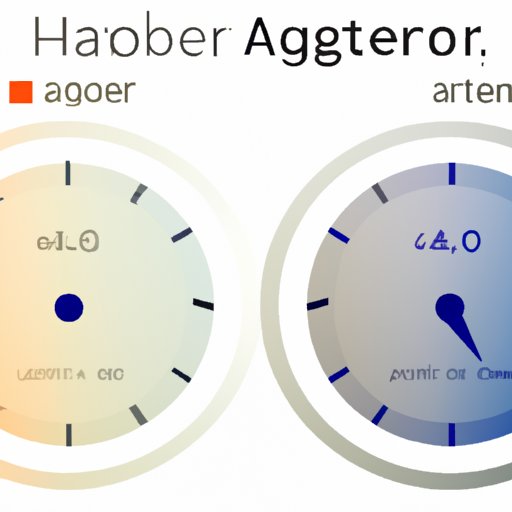
Exploring the Average Temperature of a Refrigerator
Your refrigerator is an essential kitchen appliance you rely on every day. To ensure your food is kept at its optimal temperature, it’s important to understand what the average temperature of a refrigerator should be.
To begin, let’s define what we mean by “refrigerator temperature.” This is the temperature inside the refrigerator itself, not the ambient temperature of the room or kitchen. In order to maintain food safety, the temperature inside a fridge should remain between 33°F and 40°F.
However, there are several factors that can influence the average temperature of a refrigerator, such as:
- Size of the unit
- Location of the refrigerator in the kitchen or house
- How often the door is opened
- Amount of food stored in the refrigerator
- Temperature of food added to the refrigerator
- Age and condition of the refrigerator

Setting the Ideal Temperature for Your Fridge
So what is the recommended temperature for a refrigerator? According to the U.S. Food and Drug Administration (FDA), the ideal temperature range is between 34°F and 38°F. This range will help keep food fresher longer while also preventing any potential health risks associated with consuming spoiled food.
Most refrigerators come with a built-in thermostat that you can easily adjust to set the temperature. All you need to do is locate the thermostat and set the dial to the desired temperature. The thermostat can usually be found near the top of the refrigerator, or sometimes inside the door.

Maintaining the Right Temperature for Your Refrigerator
Once you have set the temperature of your refrigerator, it’s important to maintain that temperature for optimal performance. Here are some tips for setting and maintaining the right temperature in your fridge:
- Be mindful when opening and closing the refrigerator door. The more frequently you open the door, the more energy is used to cool down the air inside.
- Don’t overfill the refrigerator. Too much food inside can make it harder for air to circulate, resulting in an uneven temperature throughout the unit.
- Clean the condenser coils regularly. Dust and dirt can build up on the coils, making them less effective at cooling the air inside.
- Regularly check the temperature of your refrigerator with a thermometer. This will help you stay on top of any changes in temperature.
Keeping your refrigerator at the right temperature has many benefits. It helps keep food fresher for longer, reduces energy consumption, and prevents bacteria from growing in your food. Additionally, it can extend the life of your refrigerator by reducing wear and tear on the unit.
Staying Safe: The Average Temperature for a Refrigerator
Not only is it important to keep your food safe and fresh, but it’s also essential to make sure the temperature of your refrigerator is within the recommended range. Running a fridge too hot or too cold can have serious consequences. If the temperature is too high, bacteria can grow quickly in foods and make you sick. On the other hand, if the temperature is too low, food can spoil faster and you may end up wasting money.
To avoid these issues, it’s important to regularly check the temperature of your refrigerator and make sure it’s set to the optimal level. If you find that the temperature is off, take steps to adjust the thermostat and maintain the right temperature.
Conclusion
Setting and maintaining the right temperature in your refrigerator is crucial for food safety and optimal functionality. Keeping the temperature between 33°F and 40°F is essential to prevent food spoilage and potential health risks. By being aware of the average temperature for a refrigerator and taking steps to adjust the thermostat accordingly, you can ensure that your food is stored safely and properly.


